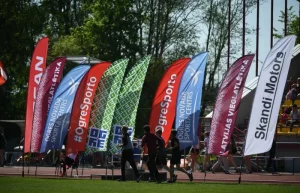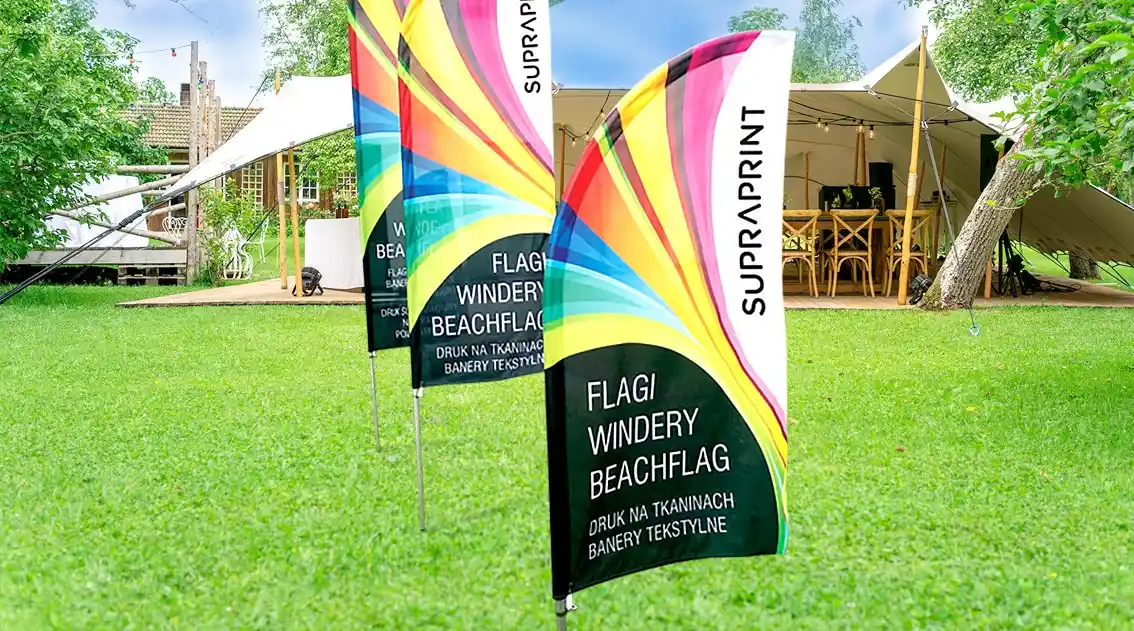In lifestyle events, banner selection can markedly impact visibility and engagement. The choice between single and double sided banners hinges on factors such as layout, audience dynamics, and budget. Single sided options offer cost efficiency in specific settings, while double sided banners enhance visibility from multiple angles. Understanding these nuances is essential for effective messaging. As the decision unfolds, the implications for event success become increasingly apparent. What considerations should guide this choice?
Key Takeaways
- Assess the event layout to determine if visibility is needed from multiple angles, favoring double sided banners for high-traffic areas.
- Consider budget constraints, as single sided banners are typically more cost-effective and simpler to produce.
- Evaluate the audience dynamics; double sided banners enhance community engagement by being visible from various directions.
- Use single sided banners for indoor events with limited space where viewing is primarily from one direction.
- Prioritize the design impact; double sided banners allow for more information and creativity to capture attention in crowded environments.
Understanding the Purpose of Banners in Lifestyle Events
Banners serve as essential tools in promoting lifestyle events, acting as visual anchors that capture attention and convey information. They play an important role in creating a sense of belonging among attendees, guiding them toward key experiences. When considering single vs double sided banners, one must recognize that each type serves distinct purposes. Single-sided banners typically target a specific audience, focusing on clear messaging that resonates with passersby. Conversely, double-sided banners maximize visibility, reaching a broader audience and enhancing the event’s overall atmosphere. By selecting the appropriate banner style, event organizers can effectively create an inviting environment that fosters engagement and connection. Ultimately, understanding the purpose of banners is crucial for ensuring that lifestyle events thrive and participants feel included.
Key Differences Between Single and Double Sided Banners
When evaluating the options available for event signage, understanding the key differences between single vs double sided banners is essential for making an informed decision. Single sided banners display visuals and information only on one side, making them suitable for viewing from a specific angle. In contrast, double sided banners provide visibility from both sides, maximizing exposure in high-traffic areas. This distinction impacts design choices; single sided banners may require a simpler layout, while double sided banners allow for more intricate messaging and branding opportunities. Additionally, considerations such as placement and space availability come into play, influencing the effectiveness of each banner type. Ultimately, the choice between single vs double sided banners hinges on the event’s specific needs and desired audience engagement.
Advantages of Single Sided Banners
Single sided banners offer several advantages that make them a practical choice for various events. First, they are typically more cost-effective than their double-sided counterparts, allowing event organizers to allocate budgets more efficiently. Their simplicity also makes them easier to design and produce, ensuring that messaging is clear and focused. Additionally, single sided banners are lighter and easier to transport, making setup and takedown a breeze. They are an excellent option for indoor events where visibility is ideal from one direction. Finally, single sided banners can be effectively used in environments where linear space is limited, ensuring that essential information reaches the intended audience without overwhelming them. In the context of single vs double sided banners, these benefits make single sided banners a compelling choice.

Benefits of Double Sided Banners
While single sided banners have their merits, double sided banners offer unique advantages that can markedly enhance visibility and impact during events. These banners capture attention from multiple angles, ensuring that they reach a wider audience, regardless of foot traffic direction. This dual-sided presentation maximizes marketing potential, allowing for more information or messaging to be displayed. Additionally, double sided banners are particularly effective in crowded spaces, where competing visuals are abundant; they stand out and promote engagement. The versatility of these banners also allows for easy repositioning, making them adaptable to various event layouts. Ultimately, opting for double sided banners can create a more immersive experience, fostering a sense of community and connection among attendees.
Choosing the Right Banner for Your Event Needs
Selecting the appropriate banner type for an event requires careful consideration of various factors that align with specific needs and objectives. When evaluating options, one must weigh the advantages of single vs double sided banners. Single-sided banners are ideal for locations where viewing is limited to one direction, while double-sided banners maximize visibility in high-traffic areas, effectively capturing attention from multiple angles. Additionally, budget constraints and aesthetic preferences play an important role in decision-making. For events aiming to create a sense of community and connection, double-sided banners may enhance engagement and interaction. Ultimately, understanding the event’s atmosphere and audience dynamics will guide the selection process, ensuring that the chosen banner resonates with attendees and fulfills its intended purpose.
Frequently Asked Questions
Can I Use Single Sided Banners Outdoors?
Yes, single sided banners can be used outdoors; however, their visibility is limited to one side. For maximum impact, considering environmental factors and placement is essential to guarantee effective communication and audience engagement.
How Do I Clean and Maintain My Banners?
To clean and maintain banners, gently wipe with a damp cloth and mild soap, avoiding harsh chemicals. Regular checks for wear guarantee longevity, preserving their vibrant appearance and maximizing impact during events.
What Materials Are Used for Each Banner Type?
Single-sided banners typically use vinyl or fabric, ensuring vibrant prints. In contrast, double-sided banners often incorporate thicker materials like mesh or double-layered fabric, providing durability and visibility from multiple angles, enhancing overall appeal at events.
How Long Do Banners Typically Last?
Banners typically last between one to three years, depending on materials and environmental conditions. Proper care and storage can extend their lifespan, making them a valuable investment for those seeking to create lasting impressions at events.
Can I Customize the Size of My Banners?
Yes, banner sizes can be customized to fit specific needs. This flexibility allows individuals to create impactful displays that resonate with their audience, enhancing engagement and ensuring their message is effectively communicated at lifestyle events.
Conclusion
To sum up, selecting the appropriate banner style for lifestyle events hinges on understanding the venue, audience dynamics, and budgetary constraints. Single sided banners offer a cost-effective solution for specific viewing angles, while double sided options enhance visibility in bustling environments. By carefully evaluating these factors, event organizers can make informed decisions that not only convey their message effectively but also enrich the overall participant experience, ultimately maximizing the impact of their event.
You May Also Like To Read:





